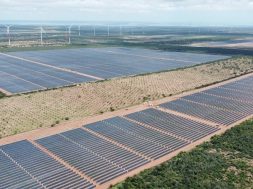
California’s next four years of net metering policy have fallen into place, and for the solar industry, it’s a major victory — with a big dose of uncertainty, and a considerable amount of last-minute conflict.On Thursday, the California Public Utilities Commission voted 3-to-2 to enact its net energy metering (NEM) successor tariff, also known as NEM 2.0. For the past decade, this policy has assured net-metered customers that they’ll earn retail-rate payments for their surplus solar energy, which has helped push the state to lead the country in rooftop solar deployments.
As expected, Thursday’s decision upholds those retail rates, handing solar companies an important win, compared to recent net-metering losses in states like Hawaii and Nevada. Much of the public battle between solar advocates and California’s big investor-owned utilities has been about these rates — utilities had asked to cut them, saying they unfairly shifted costs to non-solar customers.But the new regime also imposes an “aggressive” move to time-of-use rates for net-metered customers, Commission President Michael Picker noted. Starting as soon as the successor tariff is implemented, net-metered solar customers will be required to move to TOU rates that charge different prices during different times of the day, to better match real-time costs of generating and transmitting energy across the grid at large.
Solar groups have given tentative support to this concept, but have worried that its implementation, still being worked out in CPUC proceedings and upcoming pilot projects, might make it difficult to predict the economics of net-metered solar systems in years to come. “We support a movement towards time-of-use rates, as better aligning grid needs with economic signals,” Adam Browning, executive director of the Vote Solar advocacy group, said after Thursday’s vote, but added, “we would have preferred to see a more gradual phase-in.”The 124-page decision, which included some changes posted only a day before Thursday’s vote, also reduced some of the “non-bypassable” charges that new net-metered customers will be required to pay. Specifically, they won’t pay transmission charges as part of that mix. That will reduce the average non-bypassable costs of a typical residential rooftop solar system from about 4 to 5 cents to about 2 to 3 cents per kilowatt-hour, Browning said.
But Commissioners Catherine Sandoval and Mike Florio, who voted no, said it was this last-minute exclusion of transmission charges that forced their decisions. Both said it was going too far in a decision that already favors solar compensation over fairly sharing grid and energy costs across all classes of utility customers.“If anything, it would have made sense to me to reduce the solar compensation to reflect and share the benefit of the Investment Tax Credit extension,” Florio said in Thursday’s meeting. “But these last changes have taken a decision already hailed by the solar industry, and made it even richer. And I don’t think these benefits are going to accrue to solar customers — they’re going to accrue to solar vendors.”
But Commissioners Liane Randolph and Carla Peterman joined Commission President Michael Picker in voting yes for the decision and putting it into effect. Each noted that the decision wasn’t perfect. They also highlighted that Thursday’s decision sets a 2019 deadline to reconsider its net metering policies and to adjust their value equations in light of other regulatory proceedings underway in the state.“This has been a very contentious, very complicated process,” Picker said. But “it’s a big step toward giving California consumers more choice, more responsibility, and more control over their energy usage.”
















